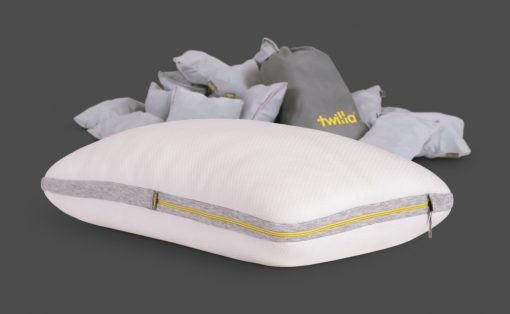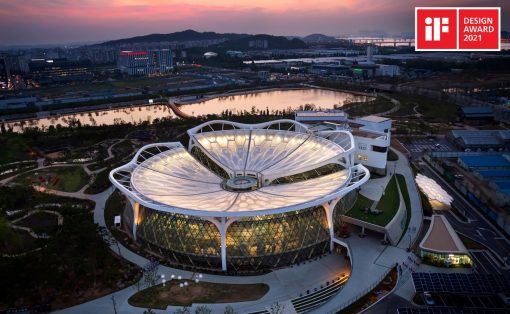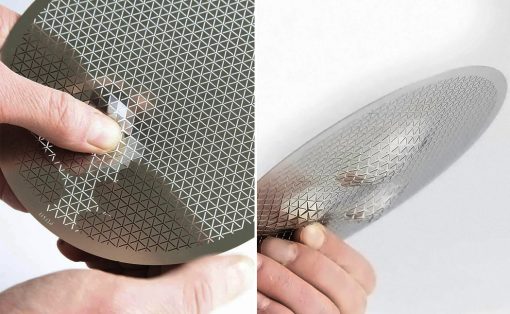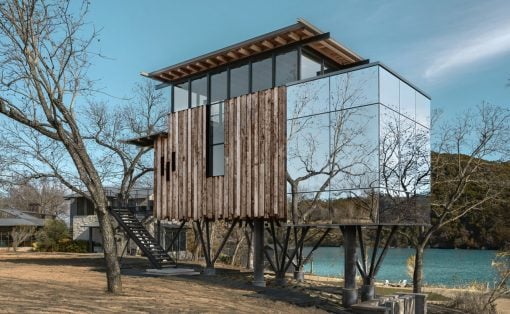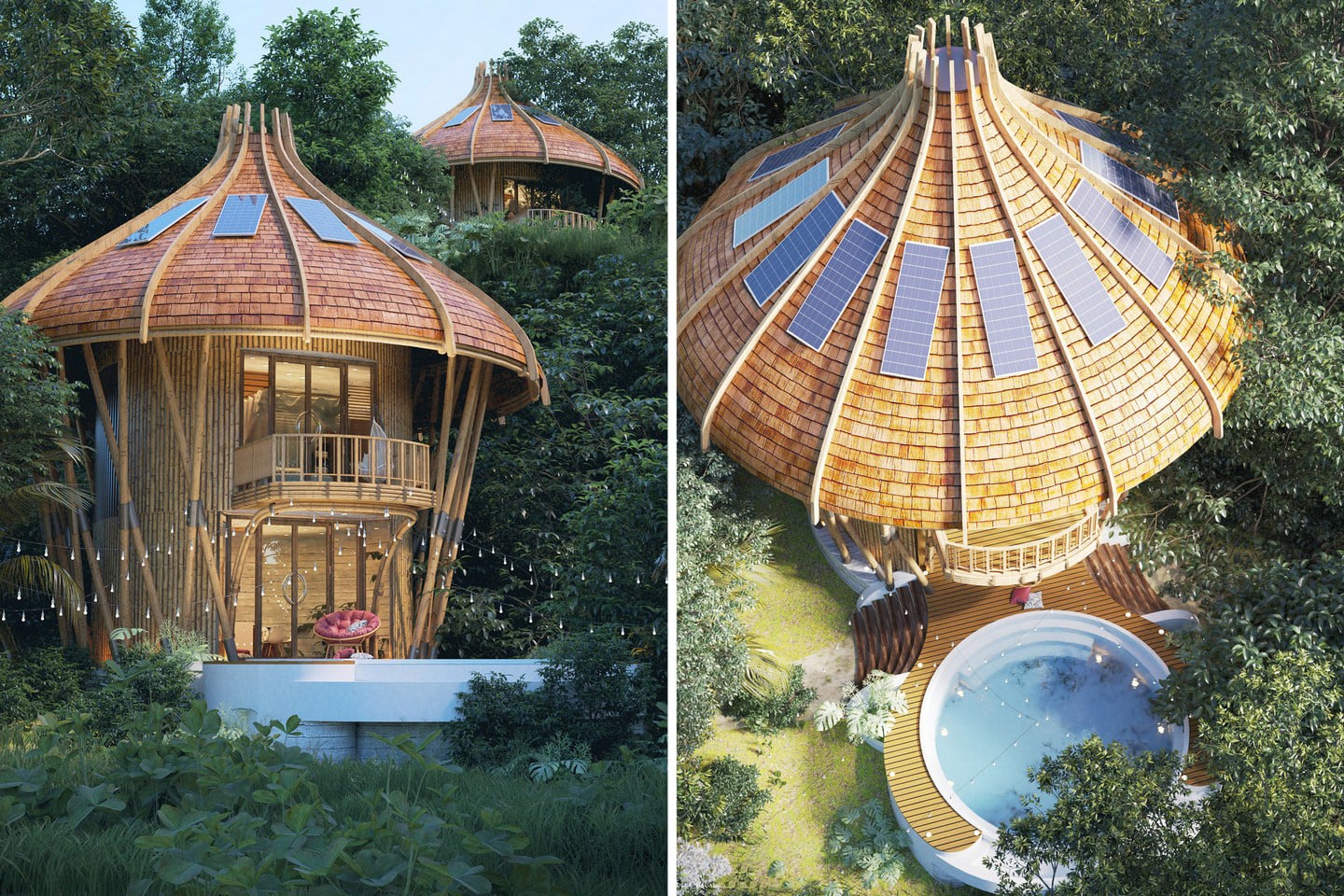
From quaint wooden cabins to floating mansions – the world of architecture is always thriving and evolving! It is anything, BUT boring. The scope of architectural structures today is unlimited, and it’s evident in the arsenal of builds we featured on YD, in the month of June! From mushroom-shaped duplex villas to provide the ultimate glamping experience to a kinetic glasshouse in the middle of the Silk Route Garden – we were delighted by the influx and variety of designs we got to witness, and present to you guys! And, we’ve curated the best of the lot for you! These mesmerizing designs will challenge what you believe are the boundaries and norms of modern-day architecture, widening not only your vision for it but also providing you with massive inspiration. Enjoy!
1. The Mushroom Villa
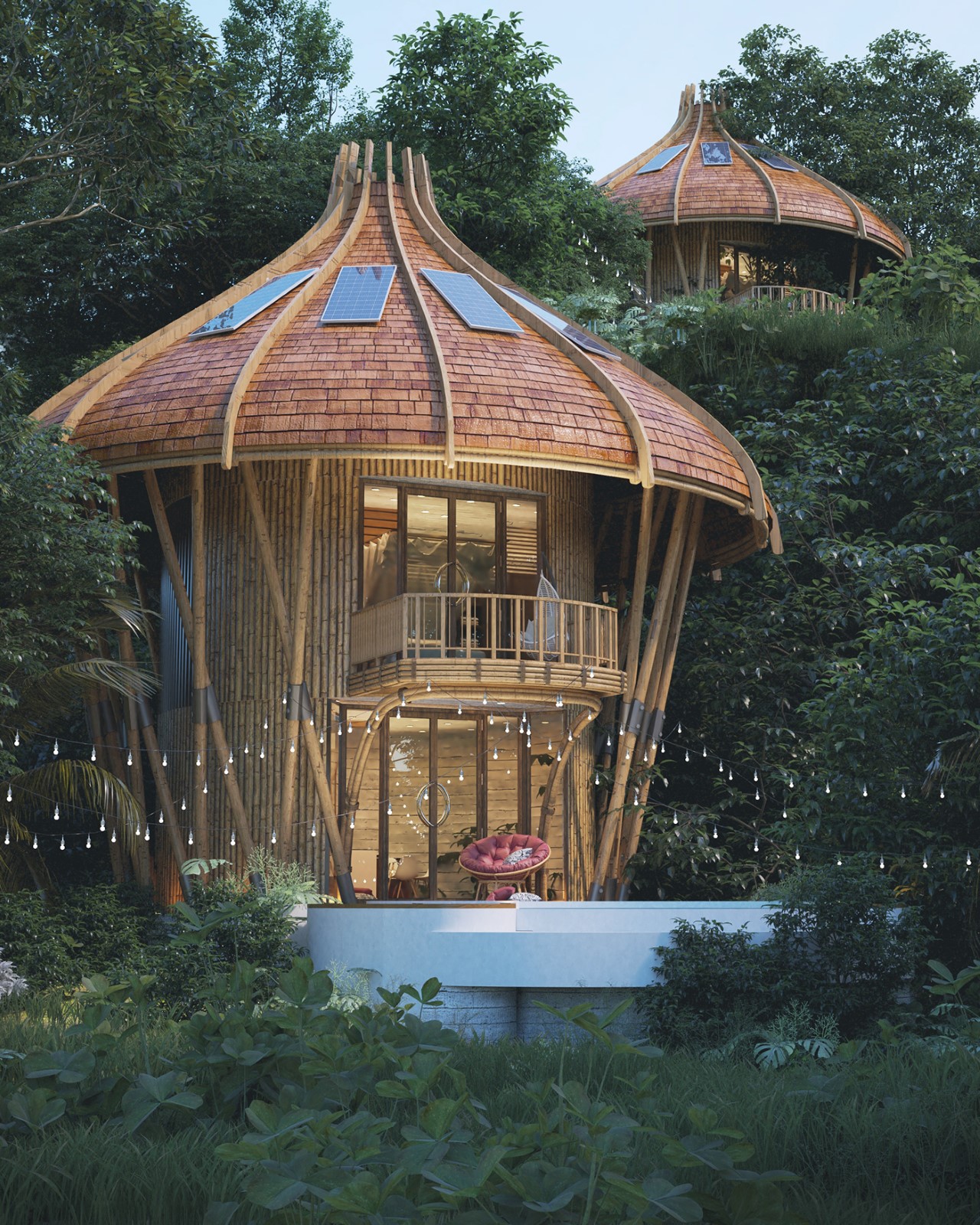
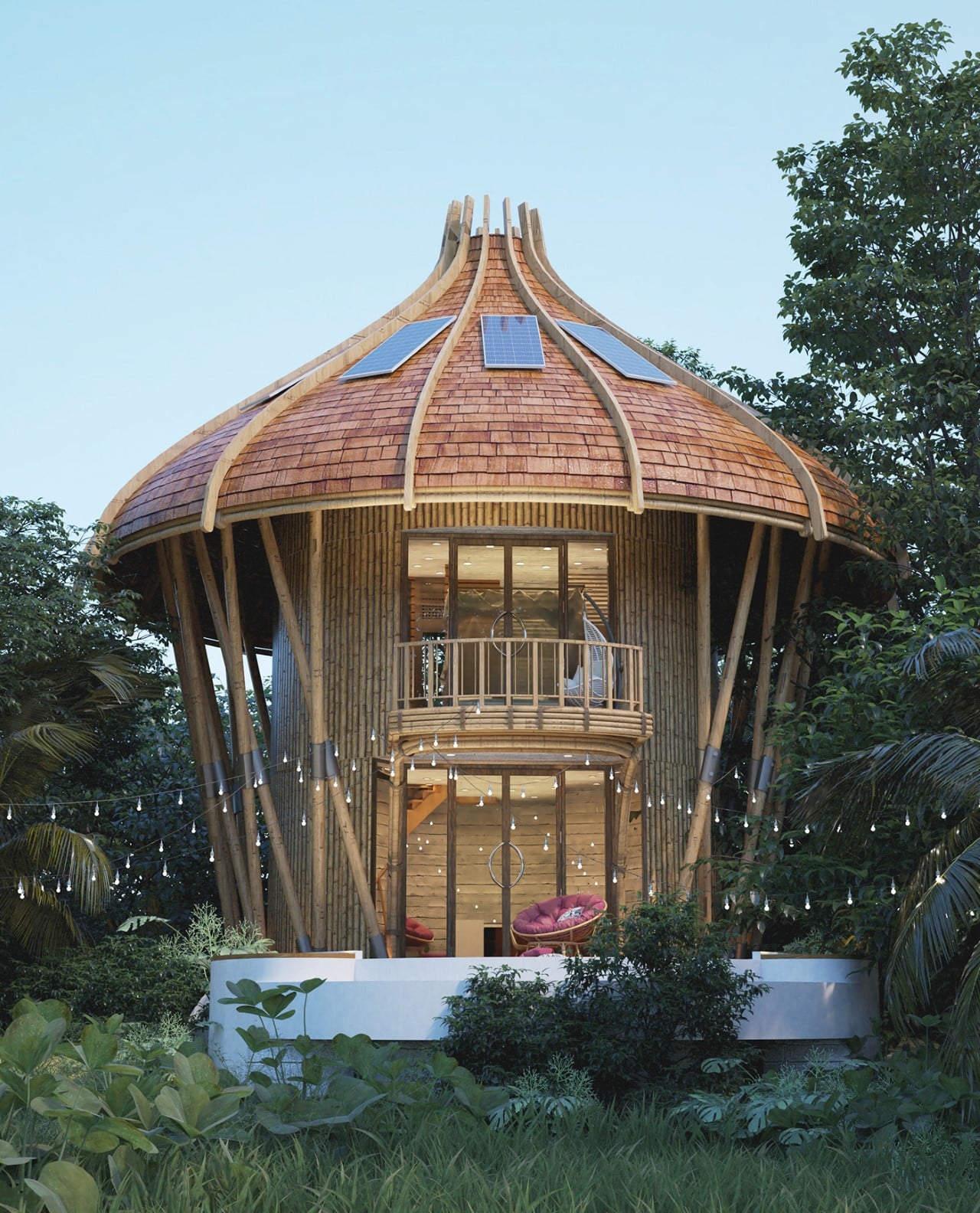
The Mushroom Villa is a wonderfully idyllic holiday home that gives you a cozy space to unwind in.
Why is it noteworthy?
Located right in the midst of nature, the villa is made entirely from bamboo (one of architect Thilina Liyanage’s signature materials) with terracotta tiles on the roof to keep you cool during the days. Practically cut off from civilization, the villa’s roofs also come dotted with solar panels that help power your glamping experience!
What we like
- A mushroom-cap-shaped roof on top comes with 14 solar panels that power the villa
What we dislike
- No complaints!
2. The Slope House
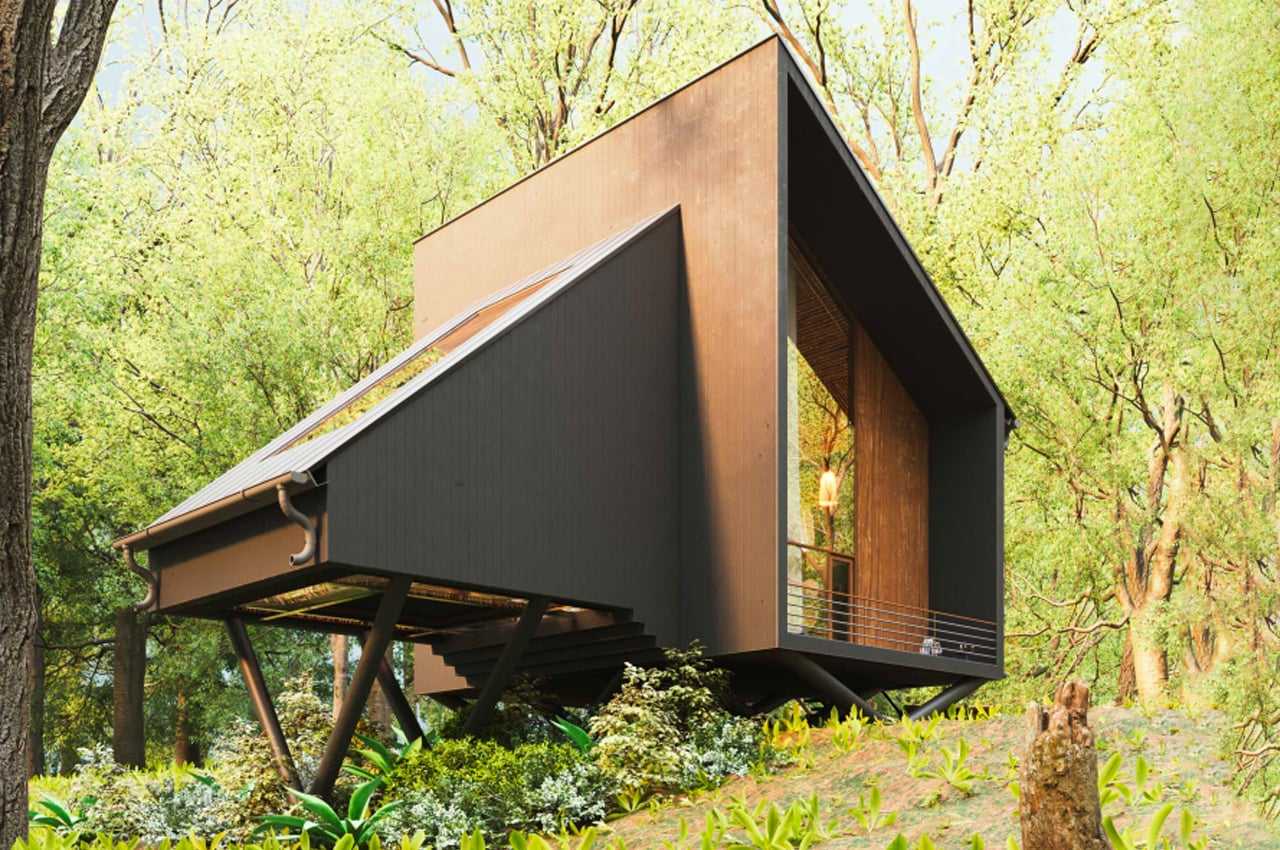
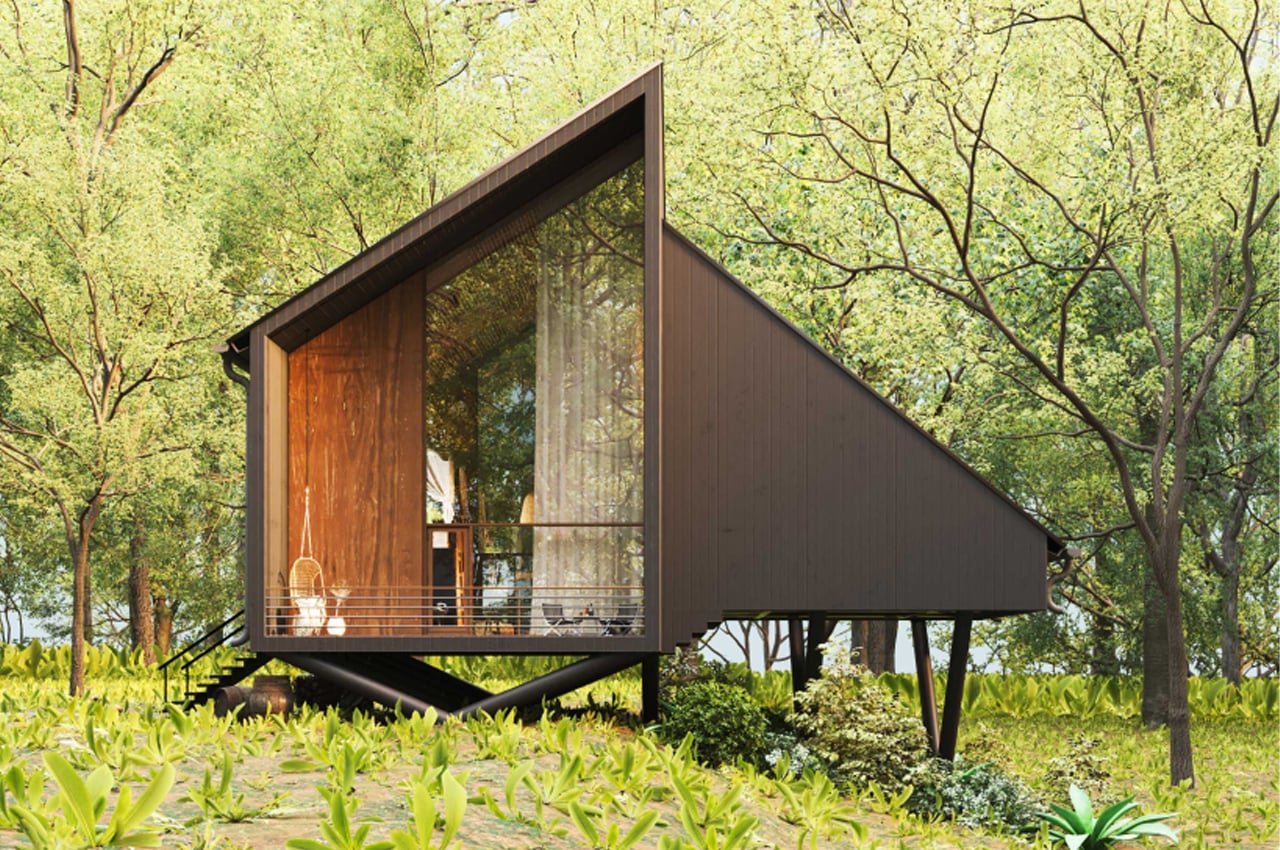
The Slope House from the 3D visualizer Milad Eshtiyaghi is an untraditional A-frame cabin that employs biophilic design inside and out. 3D visualizer and international architect Milad Eshtiyaghi has long been drawn to escapist hideaways perched on rugged, seaside cliffs and isolated cabins envisioned beneath the Northern Lights. Today, he turns his gaze to tiny cabins. A bit more quaint than treacherous, Eshtiyaghi’s latest 3D visualization finds an angular, timber cabin nestled atop an idyllic hillside somewhere in the rainforests of Brazil.
Why is it noteworthy?
Dubbed the Slope House, the timber cabin maintains a signature triangular frame that’s a thoughtful twist on the conventional A-frame cabin. Defined by two modules, one internal volume hosts the cabin’s bedroom while the other keeps the home’s main living spaces, like the dining area, kitchen, and den. The tiny cabin from Eshtiyaghi is envisioned propped atop a truss system that was specifically chosen to minimize the home’s impact on the preexisting landscape.
What we like
- A biophilic design style has been integrated into the cabin’s interior spaces
- Natural plants have been added inside the house as a small garden
What we dislike
- The theme and form of the home may be a bit too eccentric for some
3. The Maldives Floating City

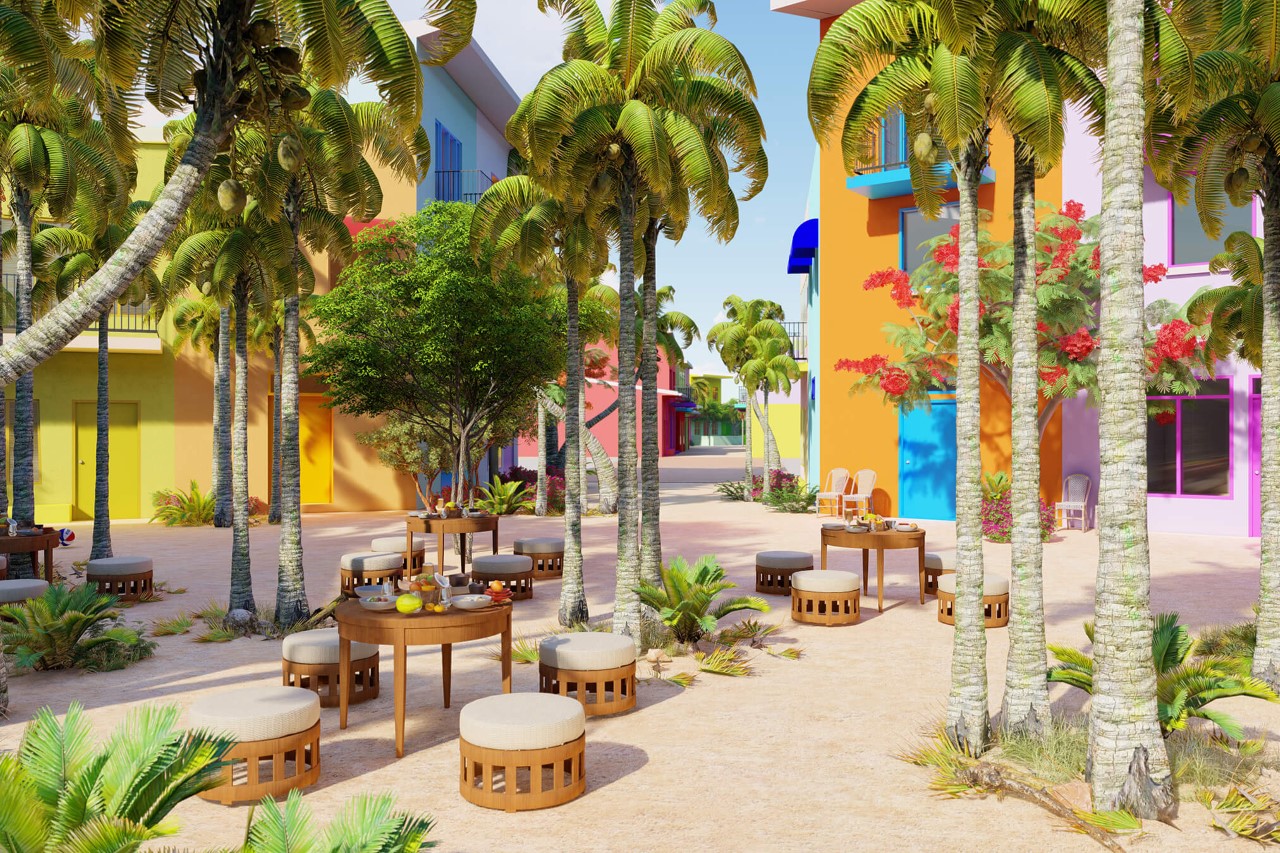
The Maldives Floating City is the world’s first of its kind with thousands of houses and complete governmental support. Houses within this unique floating framework are open not just to Maldivians, but also to the international community who can invest in residential permits and own houses within the city.
Why is it noteworthy?
Uniquely enough, every home will be a waterfront home, given the city’s coral-inspired layout, allowing all residents to be just mere feet away from the pristine waters of the Indian Ocean. The city, with its 5,000 houses will also have hotels, shops, and restaurants, and will be connected to Malé via water-based transport (the floating city is just 10 minutes away)
What we like
- The city will rely on green/blue energy and a smart grid will help distribute power between units
- Features self-sustainable facilities
What we dislike
- No complaints!
4. Heatherwick Glasshouse


The Woolbeding Gardens in West Sussex is one such place where you can now see the Silk Route Garden, a 12-step journey celebrating the ancient trading route between Asia and Europe during the 2nd century BC. And on the edge of that garden, you’ll see a jewel-like structure that will open up as a crown but is actually a glasshouse.
Why is it noteworthy?
The kinetic Heatherwick Glasshouse is the focal point of the Silk Route Garden with its ten steel sepals and its glass and aluminum facade. During the summer, the glasshouse will open up through its hydraulic mechanism which takes four minutes to be fully open. This allows the plants inside to be exposed to the sun and to natural ventilation and also for the visitors to see the various subtropical trees and shrubs inside. But during winters or colder weather, the Glasshouse will remain closed to protect the subtropical species inside.
What we like
- Inspired by ornamental Victorian terrariums or sealable containers with soil and plants
- The glasshouse opens up through its hydraulic mechanism which takes four minutes to be fully open
What we dislike
- No complaints!
5. OM-1


Don’t you just wish sometimes that you could “build” a house online and then order it just the way you like it? Well, now you actually can to some extent as a company called Dimensions X is aiming to be the Tesla of prefabricated homes. Plus, just like the environmentally friendly car company whose model they are following, the houses they will be offering homes that are energy efficient and will offer less carbon footprint.
Why is it noteworthy?
Australian entrepreneur Oscar Martin partnered with architect Peter Stutchbury to create a company that can offer people their prefabricated homes with a few clicks on their website. The process isn’t yet as simple as ordering a Tesla but they do have an online configurator that will tell you how much it will cost you as soon as you build your prefab home and make certain changes to it. There are modules and elements that you can modify to make it your own.
What we like
- An energy-efficient home with a small carbon footprint
- You can choose things like the length and size of the entire house as well as placements of doors and windows, finishes, orientations, and other elements that you can personalize
What we dislike
- No complaints!
6. A Pavilion
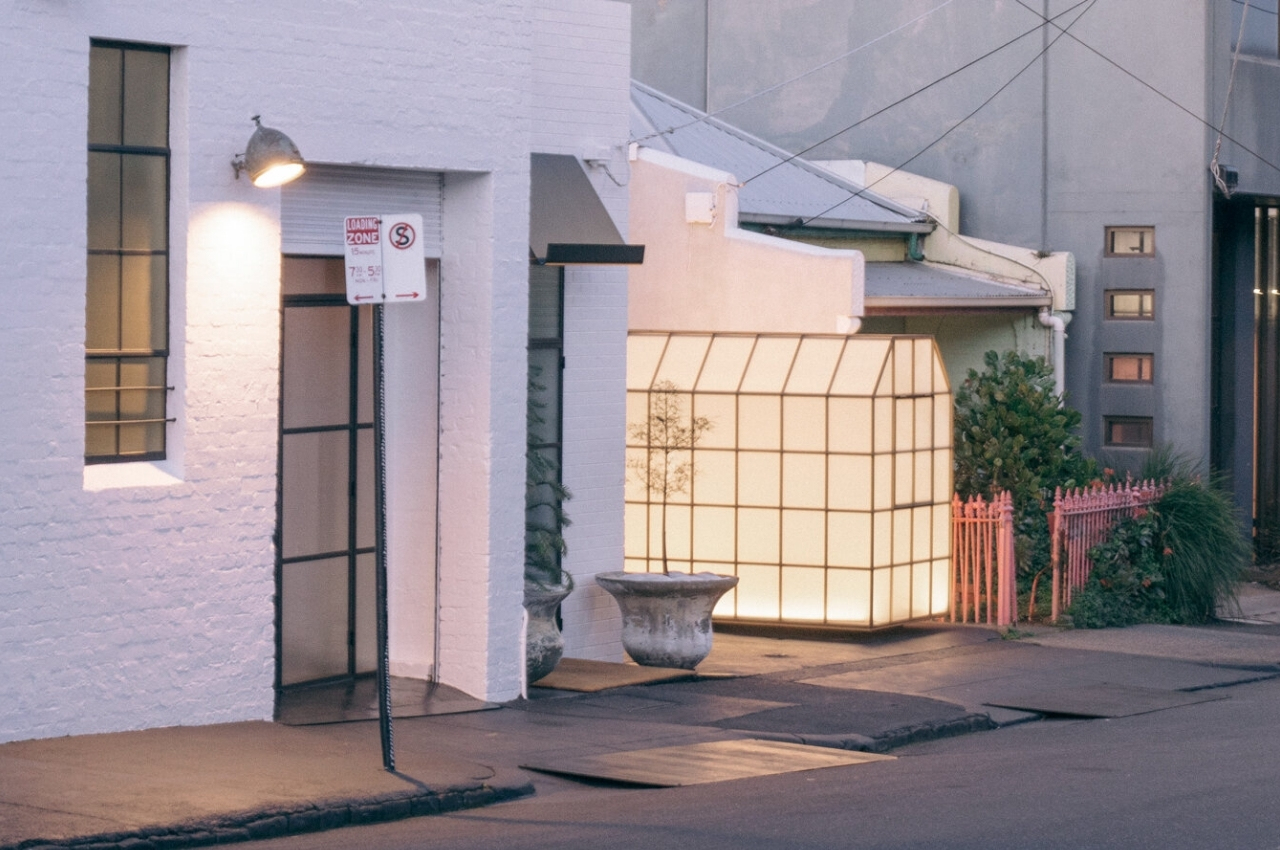
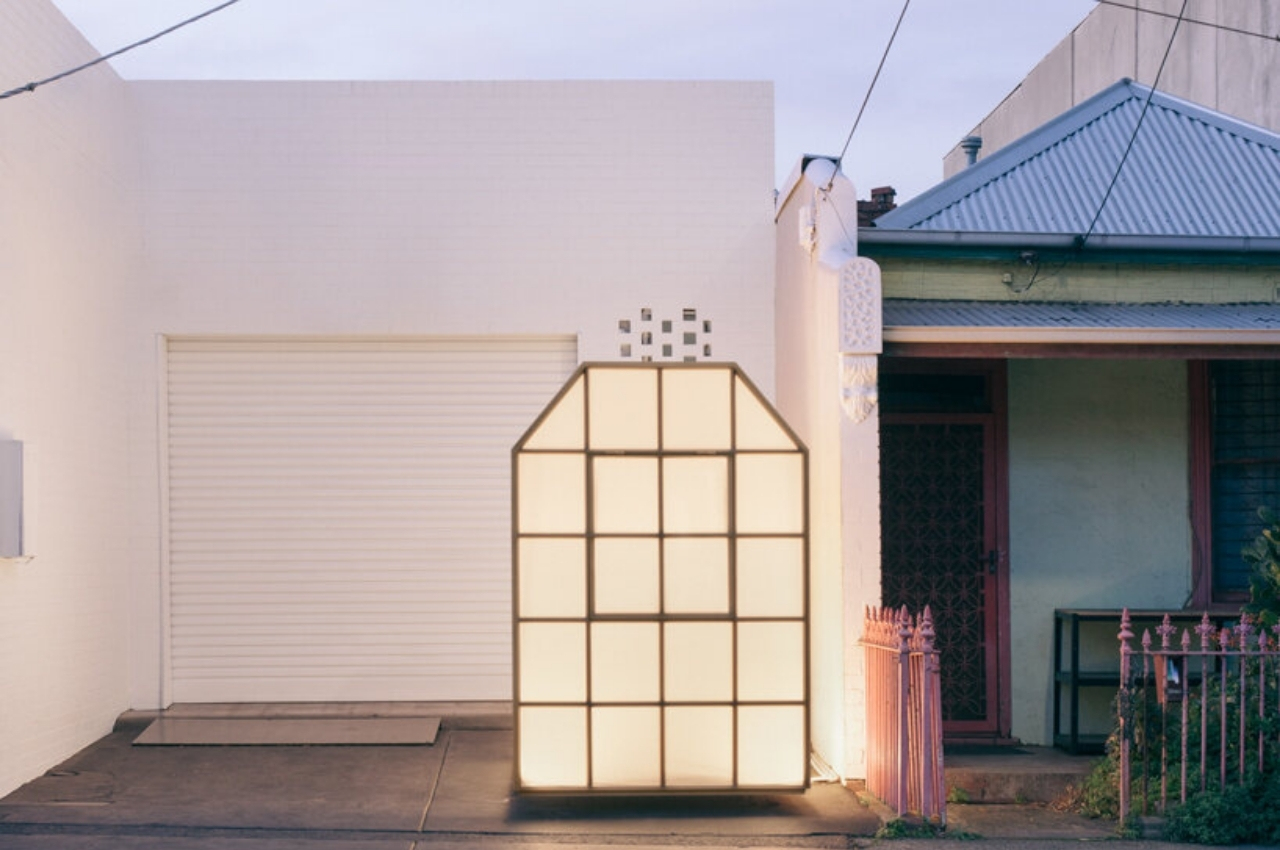
When you hear the word pavilion, you probably think about something that’s huge and grand. You get visions of big events being held inside a dome or some other interestingly shaped structure that can fit hundreds or even thousands of people. But this luminescent and “unquestionably small” structure was intentionally built to be a tiny, portable booth that can be transported wherever it is needed. Still the designers chose to name it “A Pavilion”.
Why is it noteworthy?
The structure is made from a three-directional grid of steel T-sections but the whole thing is covered in translucent glass, hence giving it the look of a greenhouse. Even the roof is made from the same kind of glass so you get a singular space and look for the entire thing. But it does have some chamfered edges, giving off a sort-of thatched roof look. Inside it’s also a bit different as the floor is made from timber, a departure from the overall glass look of the A Pavilion.
What we like
- Can be transported where it’s needed with just a small truck
- When the sun sets down, it seemingly glows because of its translucent glass skin
What we dislike
- No complaints!
7. ArkHaus


ArkHaus is a livable, multi-story luxury yacht that will be floating in Miami’s Biscayne Bay.
Why is it noteworthy?
It is the first solar-powered floating mansion with solar awnings paired with electric propulsion and also has a rainwater harvesting system to make it a sustainable, 4,350-square feet yacht. The materials used to build it are probably not that eco-friendly so we can’t really call it a green floating house.
What we like
- Solar-powered + sustainable mansion
- Looks like it’s really floating on the water but it actually has four hydraulic spuds that raise it out of the water so it will still be stable and not be impacted so much by the wave
What we dislike
- No complaints!
8. Batyrkhan’s yurts
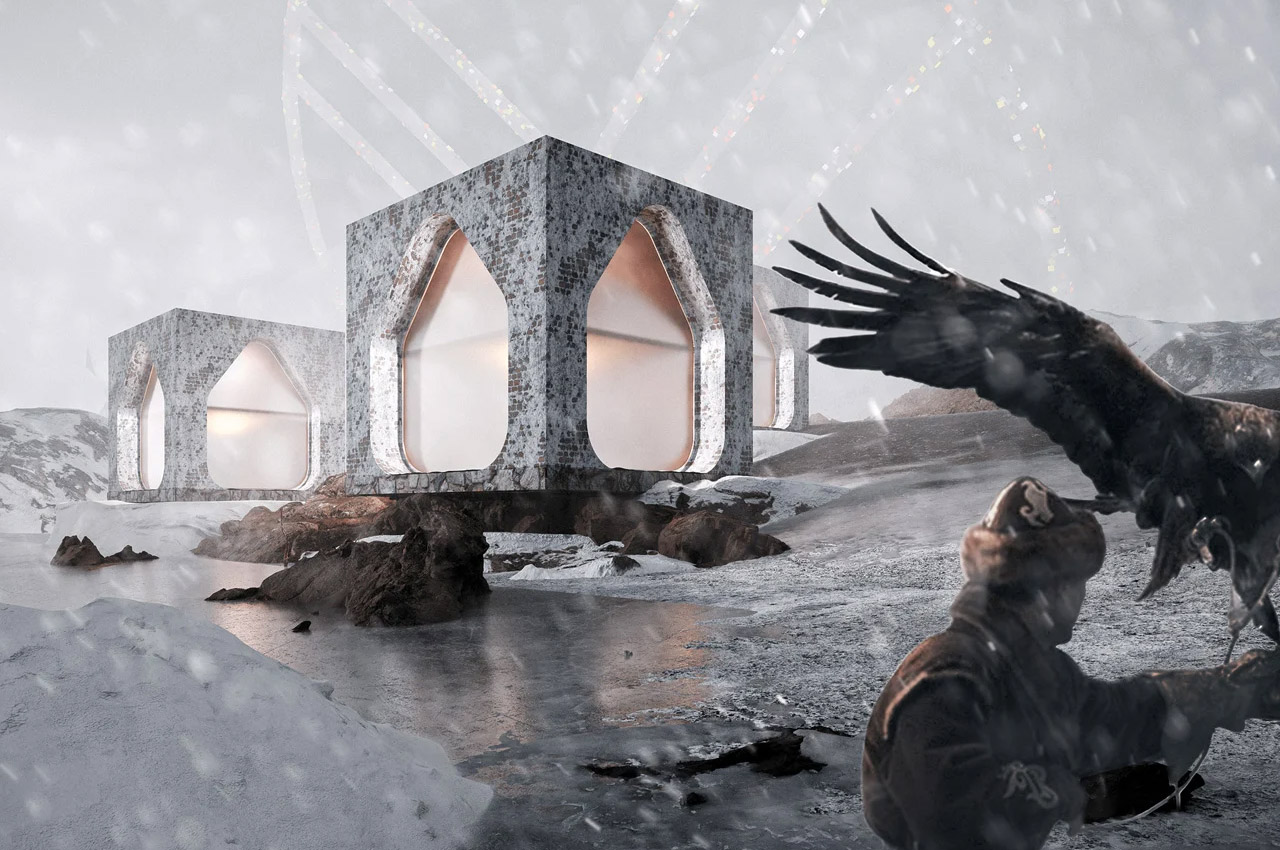
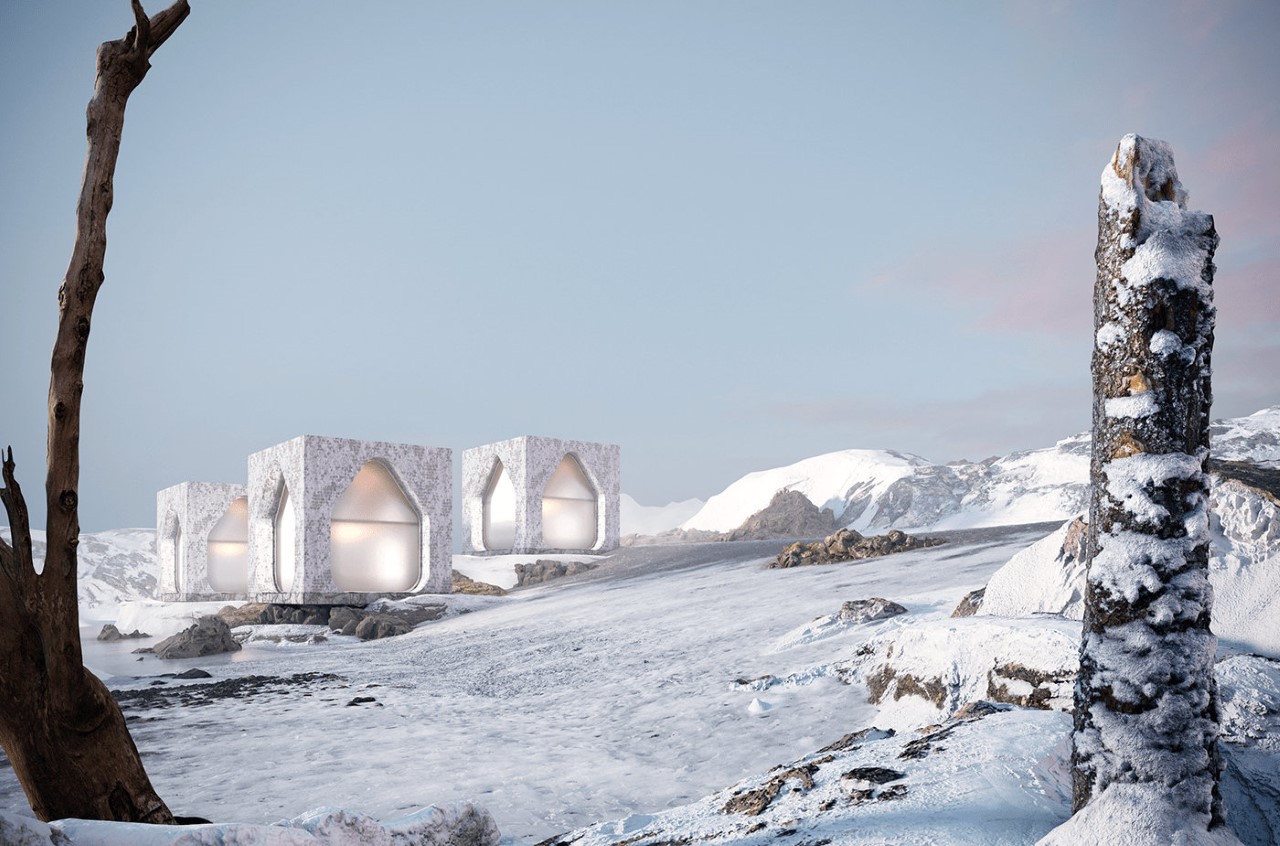
Designed as a minimalist reinterpretation of the iconic yurt found in the steppes of Central Asia, these futuristic housing solutions are a part of designer Batyrkhan Bayaliev’s Kyrgyzstan 2122 visual project.
Why is it noteworthy?
A rather modern reinterpretation of the traditional yurt, Batyrkhan’s yurts are cuboidal instead of cylindrical and are permanent concrete structures instead of tents. As a hat-tip to the yurt’s iconic design, however, these modern establishments have frosted glass windows in the shape of a yurt, capturing the iconography of the traditional tent. Batyrkhan’s modern yurts are spacious and have two levels for accommodating more people.
What we like
- The yurts are like modern-day igloos
- Protects the residents from the harsh weather of the cold landscape outside
What we dislike
- No complaints!
9. Raus’ Cabin


If you live in Berlin or a city near the German capital, you can avail of Raus’ service which lets you book secluded cabins whose locations are revealed to you once you’ve booked them. Their newest cabin design is as compact as they come but with a bit of a charred twist.
Why is it noteworthy?
This new compact cabin was built on the grounds of Wehrmühle Biesenthal which is just an hour away from Berlin. The 193-square-foot cabin is made from charred timber, giving it a dark and worn look that lets it blend with the dark tree trunks that surround it. It actually sits in the middle of a forest with meadows, fields, and even a small river surrounding it. You are basically escaping to nature but with all the conveniences of a stylish cabin to retreat to.
What we like
- Self-sufficient cabins
- Solar panels to provide the space with green energy
What we dislike
- No complaints!
10. Under
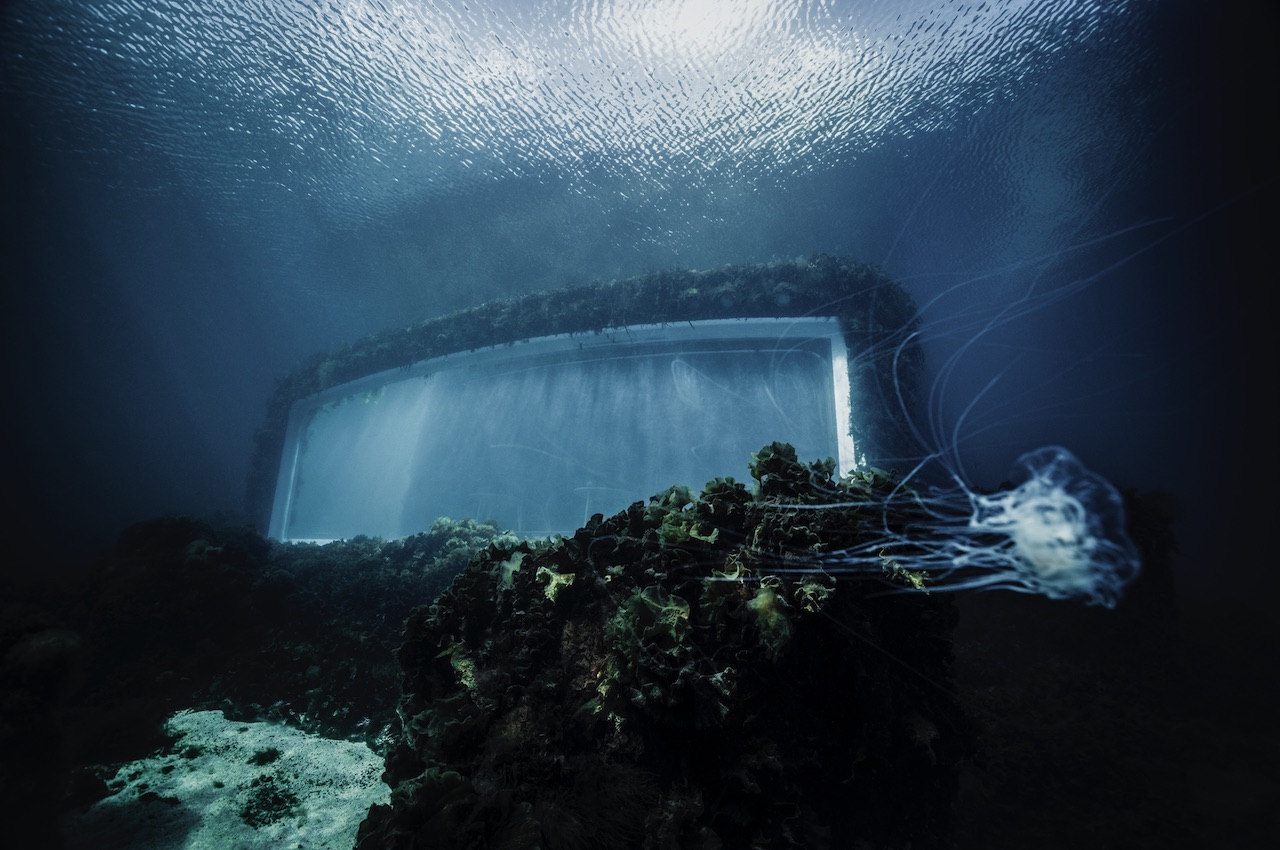
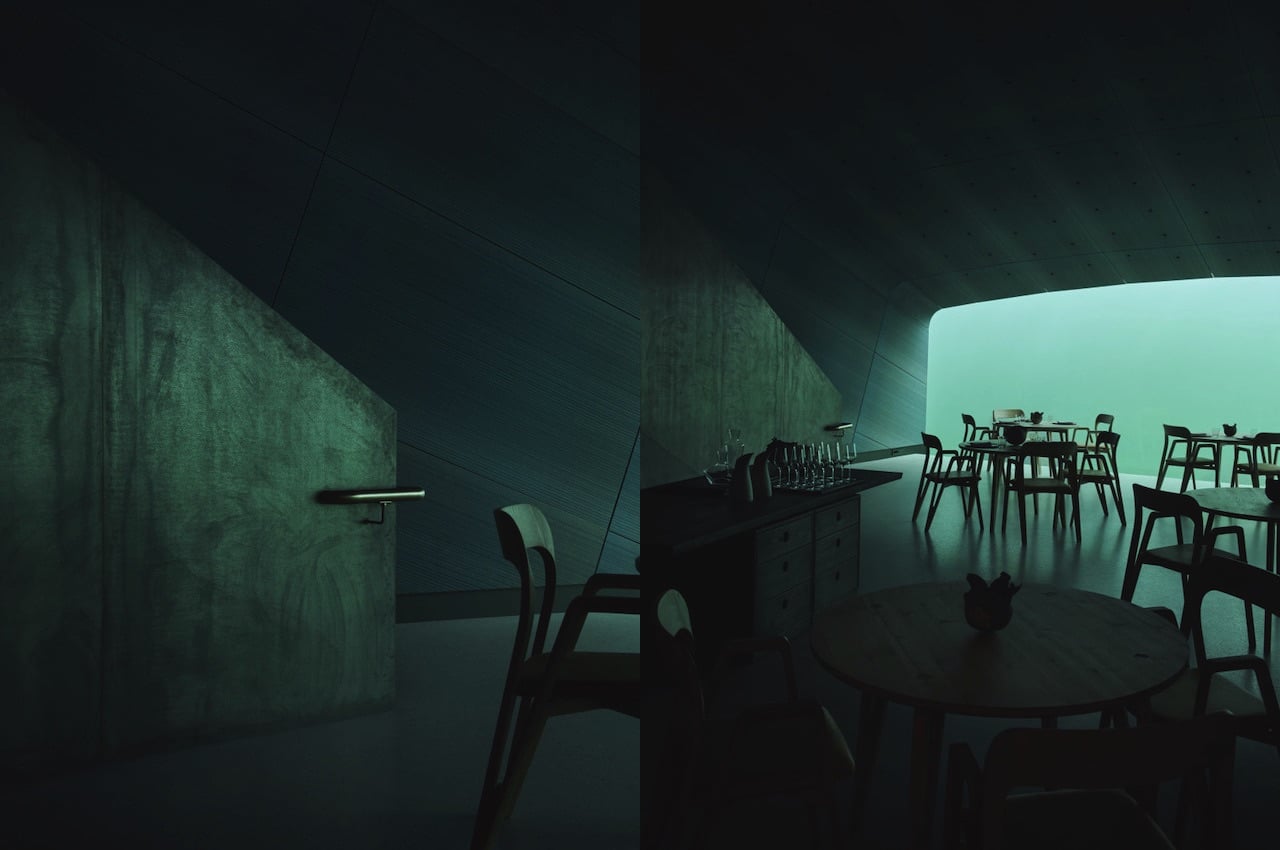
Aptly named “Under” for obvious reasons, this one-of-a-kind restaurant is something that can beat Krusty Krab. Of course, there’s really no such thing, but fans of the cartoon show will probably remember the fictional fast-food restaurant when they first learn about Under.
Why is it noteworthy?
This one aims to fully integrate the structure into a marine environment, and over time, we know it will happen, and there will be a generation that won’t notice it’s man-made. Designed by Norweigan architectural and design firm Snøhetta , the Under restaurant is made to provide an extraordinary experience to the diners and guests.
What we like
- It boasts a large eleven-meter-wide and 3.4-meter-tall horizontal window where diners can enjoy the beautiful panoramic view of the seabed
What we dislike
- No complaints!



